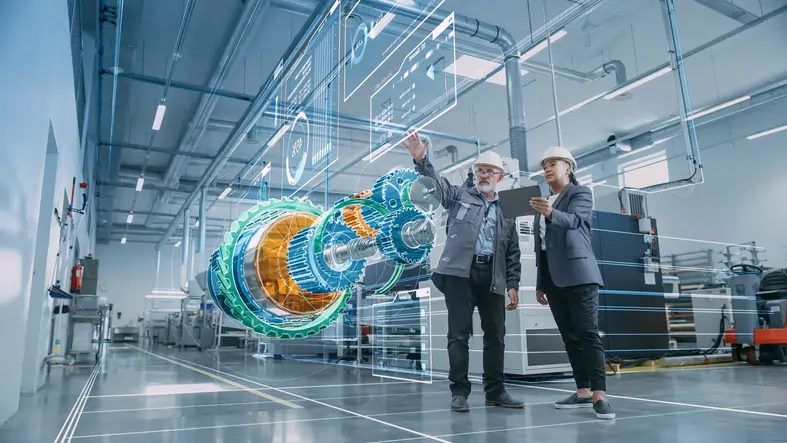

Modern technology brings a long list of benefits to the manufacturing space. Tech-driven automations boost efficiency, and tech-supported monitoring boosts quality. Technology gives manufacturing companies a toolbox of resources that can be leveraged in various ways to be more productive and profitable.
To maximize the impact of technology, manufacturing companies must make efforts to stay up to date on the latest manufacturing tech. The following are a few of the latest tech tools with the potential to improve manufacturing efficiency.
Telematics
Telematics has the potential to dramatically improve manufacturing efficiency by giving companies access to data-driven decision-making. It allows companies to have a comprehensive picture of equipment performance and health through technology that empowers real-time monitoring of a wide range of equipment and operations. Telematics takes the guesswork out of equipment maintenance, empowering operations that are safer and more reliable.
Sensors embedded in machinery provide the data that drives telematics by collecting data on factors like temperature, vibration, and usage patterns. The data is then analyzed using AI algorithms to predict maintenance needs.
The latest telematics tools can be added to a wide variety of equipment as retrofits, providing prognostic and diagnostic data remotely that can predict the remaining useful life of manufacturing equipment with up to 99 percent accuracy. This technology not only reduces costs through predictive maintenance but also boosts productivity by ensuring equipment is always in optimal condition.
Operator-assist technology
Technology tools that enhance safety measures in the manufacturing space are a massive win for any company. Manufacturing work ranks among the most dangerous occupations, so any technology that reduces safety risks should be widely embraced.
Operator-assist technology can significantly reduce safety risks in material handling while also increasing overall efficiency. Proximity sensors are one example of operator-assist technology that can be applied in many manufacturing operations. For example, these sensors can assist drivers and other machinery operators avoid collisions and trigger automatic reductions in speed when obstacles are detected.
Cutting-edge operator assist tools are being used in modern forklifts to reduce the risk of tipping. The tools continuously monitor the forklift’s center of gravity, making adjustments to ensure stability based on the lift’s movements and the weight of its load. Technology also helps forklift operators monitor their surroundings to detect obstructions, including other machinery and fellow workers.
Voice-activated controls are another type of operator-assist technology that can improve efficiency and safety in manufacturing. Just like calling upon Alexa to control components around the home, voice-activated controls allow operators to engage with manufacturing machinery hands-free. Voice activation is an innovation that can improve both safety and efficiency by allowing operators to keep their hands and focus on machinery and tools.
Lithium-ion power solutions
The shift to lithium-ion batteries in industrial equipment provides multiple benefits for the manufacturing industry. Compared to traditional lead-acid batteries, lithium-ion batteries offer higher energy density, longer lifespans, and faster charging capacities. When combined, these features can deliver enhanced efficiency and reliability in manufacturing operations.
Lithium-ion batteries also boost sustainability in the manufacturing space. By providing a more efficient alternative to traditional power sources, they reduce their users’ environmental footprint, helping companies meet sustainability goals mandated by regulations.
Tech innovations on the horizon
Manufacturing companies should also take note of several tech innovations on the horizon that promise to benefit those in the manufacturing sector. One that is especially notable is the use of augmented reality (AR) for training and maintenance.
In training, for instance, AR equipment can provide instructional overlays — which appear to float in mid-air — that blend educational material with real-world equipment, creating a more engaging and impactful experience. For maintenance, AR can overlay real-time guidance with detailed instructions to streamline the repair and maintenance of complex industrial equipment.
Other emerging tech innovations to which manufacturing companies should pay close attention include 3D printing for rapid prototyping and customization, advancements in Internet of Things (IoT) platforms for enhanced value chain visibility and control, and the integration of artificial intelligence and machine learning for predictive analytics and process optimization.
The path to maximum impact
While manufacturing companies have made significant strides in recent years to improve efficiency through the use of more advanced technology, there is still potential waiting to be tapped. Those willing to invest in change will find ample opportunities to move forward, including embracing collaboration and partnerships with small, agile technology companies.
When companies seek to foster a culture of innovation and invest in holistic digital transformation initiatives, they will discover a wide range of possibilities for greater efficiency through technology.
– Iggy Domagalski is President & CEO of Wajax, one of Canada’s longest-standing and most diversified industrial products and services companies. He is a people-first leader with a track record of building businesses and shareholder value. With a diverse background spanning industrial equipment, finance, and acquisitions, he has led organizations of all sizes, including national publicly traded, mid-market private, small business, and non-profit. He has been named one of Canada’s Top 40 Under 40 and one of Canada’s 50 Most Inspirational Entrepreneurs.


